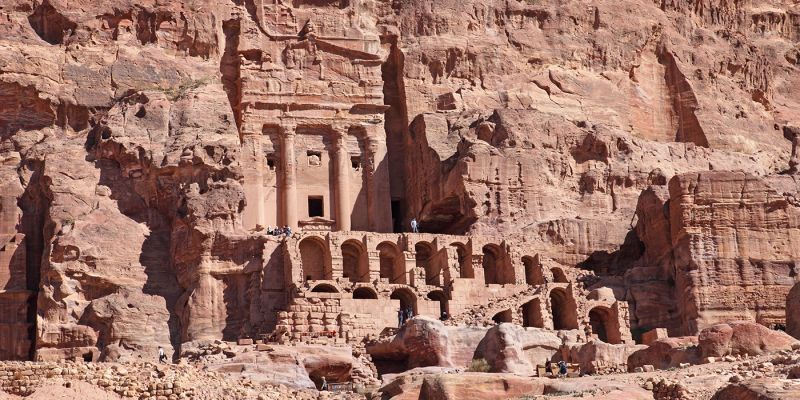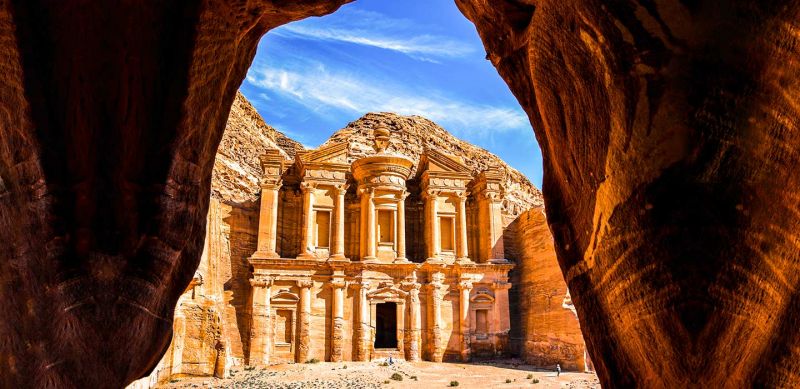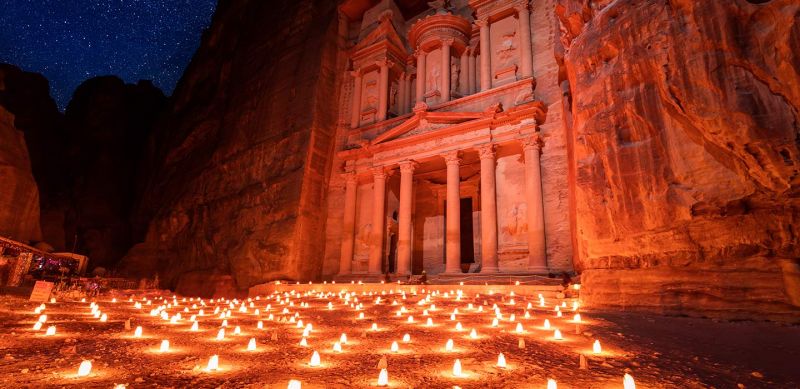Royal Tombs Petra
During any trip to Petra, you can't miss the unpredictable Royal Tombs that took its name from the rich decoration. Know More About it!
What are the Royal Tombs of Petra?
The Royal Tombs of Petra are a series of large mausoleums carved directly into the sandstone cliffs. Their grandeur and intricate details suggest that they were established for Petra's royals or high-ranking officials. Although no definitive archaeological evidence links these tombs to specific rulers, recent research suggests a royal context.
Who Built The Royal Tombs in Petra?
The Nabataeans built the Royal Tombs of Petra. They were an ancient Arab people who inhabited the northern Arabian Peninsula and the Southern Levant. Their capital was Petra, a city renowned for its intricate rock-cut architecture.
The Nabataean Kingdom thrived from the 4th century BC to the 1st century AD. They were skilled traders, managing a vast network that spanned from Southern Arabia to the Mediterranean.
Nabataean architecture is renowned for its intricate design combined with functionality. The Royal Tombs of Petra are a testament to their mastery of rock-cut architecture.
The Architecture Of The Royal Tombs
The Royal Tombs of Petra is a set of tombs surrounded by other monumental structures, making such a beautiful historical sight. It consists of;
a)The Urn Tomb:
The Urn Tomb is among the most distinctive of the Royal Tombs of Petra, recognized by the enormous urn on top of its pediment. The tomb has a two-story substructure of arched vaults and a large colonnaded courtyard, offering a spectacular view over the city.
The Urn Tomb was constructed around AD 70. Its most noteworthy characteristic is the vast courtyard in front of it, which provides a perfect vantage point for absorbing the breathtaking landscape of Petra.
Intriguingly, the Urn Tomb was converted into a Byzantine church in 446 AD, a testament to the cultural and religious shifts that the city of Petra has witnessed over the centuries.

b)The Silk Tomb:
Beside the Urn Tomb is a small tomb known as the Silk Tomb. This name comes from the rich color of the sandstone. Then come next the Palace Tomb, the Corinthian Tomb, and the Tomb Of Sesto Fiorentino. the stunning swirls of pink-, white- and yellow-veined rock make it a unique spectacle among the Royal Tombs of Petra.
c)The Corinthian Tomb:
Adjacent to the Palace Tomb, the Corinthian Tomb is a hybrid of styles. With a large tholos (a circular structure) framed by a broken pediment and Corinthian capitals enriched with floral decoration, it reflects a mix of the Hellenistic influence and the indigenous Nabataean style.

d) Monuments Around Royal Tombs:
In addition to the Royal Tombs, several other notable monuments amplify the allure of Petra. These include the Treasury (Al Khazneh), the Monastery (Ad Deir), the High Place of Sacrifice, the Theatre, and the Street of Facades.
About 26.35 miles from the Royal Tombs, the Dana Biosphere Reserve offers a change of scenery. As Jordan's largest nature reserve, it presents a variety of terrain from sandstone cliffs to a low point in the Wadi Araba desert.

Petra Today: UNESCO World Heritage Site
Today, Petra is a UNESCO World Heritage Site attracting thousands of visitors each year. The city, with its remarkable Royal Tombs, offers a glimpse into the architectural prowess of the Nabataeans.
The Royal Tombs of Petra offers a fascinating journey into the past. As we explore these ancient mausoleums, we're not just witnessing the architectural mastery of the Nabataeans, but also experiencing the echoes of a civilization that once thrived in this region.
The Royal Tombs of Petra remind us that even in death, the Nabataeans sought to create something beautiful and enduring. As we walk through these ancient structures, we're given a rare chance to step back in time and imagine the world as it was over two thousand years ago.
Don't miss out on the chance to explore such a beautiful heritage and Book your trip to Petra Now!
